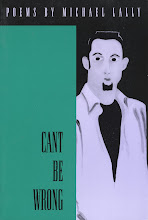So I was sure I had seen this movie. It's iconic opening number with the chorus girls, led by Ginger Rogers, singing "We're in the money" in costumes that consist of almost nothing but a large coin placed strategically, I certainly was familiar with.
But watching it last night on TCM (Turner Classic Movies in case you didn't know) I didn't remember almost any of it besides a couple of production numbers. That could be a result of the brain operation (or just plain getting older) but my guess is I never watched GOLD DIGGERS OF 1933 before.
It was introduced by the regular host, Robert Osborne, and guest co-host the great cartoonist (and playwright and screenwriter) Jules Feiffer, who both pointed out that not only is it a musical comedy that addresses The Great Depression, in its early years at the time, but it is probably the only musical comedy that ends with a big production number about unemployment, specifically unemployed veterans of WWI and their suffering.
As Feiffer said, it's more pageant than musical number since there's no real dancing and not really much singing. Feiffer amended that comment by adding that the finale was more of an editorial. There's no closing scene of the happy couple at the heart of the traditional boy meets girl plot, but instead this "editorial" big number ending on "the forgotten men" of the Depression.
My guess is that may have not just been a script choice, but a directorial and/or producer/studio editing choice because it ends on Joan Blondell surrounded by these destitute men rather than on the young Dick Powell and Ruby Keeler. Because Powell and Keeler seem to represent the corniest, cheesiest, most blatantly contrived and artificial aspects of musical comedies, whereas Joan Blondell comes across as the true heart of the flick in the subplot of taking advantage of mistaken identity to play a pompous 1% fat cat for a fool.
Blondell is so good and so real that once again I was blown away by her performance and screen presence as I have been in other films of hers TCM has resurrected and played over the past year or two. But it occurred to me last night that she is also another of those markers of the changes in the way my brain works since the surgery over two years ago now.
As I've written before, one of the things that changed was my taste in women on screen. Not in real life, and not away from the movie or TV or computer screen. Blondell was one of those old fashioned movie stars who were touted as beautiful and sexpots etc. that I could never see. I appreciated her as a comic actress and that was about it. But much like my subsequent change of taste concerning Meryl Streep's and Annette Benning's and Mitzi Gaynor's physical attractiveness and sex appeal, the brain operation totally altered my feelings about that, from not finding them either that attractive and definitely not sexy to while I'm watching them on screen being completely attracted to them!
One of the most important lessons I got from the brain op was how little who we think we are is in our control sometimes. Like this. I now find Joan Blondell to be up there with any of the movie stars I have fallen for over the years while watching them perform, from Jane Greer to Zoe Saldana. And thankfully, otherwise this film would be just an excuse to watch the crazy Busby Berkeley production numbers that make you wonder what the studio heads were thinking he was doing, and also appreciate the raw man-and-woman-power that went into creating such surreal performance pieces that these days could be done on a computer, but wouldn't be half the fun.
I'll leave you with a video of one from GOLD DIGGERS OF 1933 (the first few minutes are the cheesy stuff with Powell and Keeler, but for the chorus production Busby stuff skip to 2:40 minutes in):

















No comments:
Post a Comment